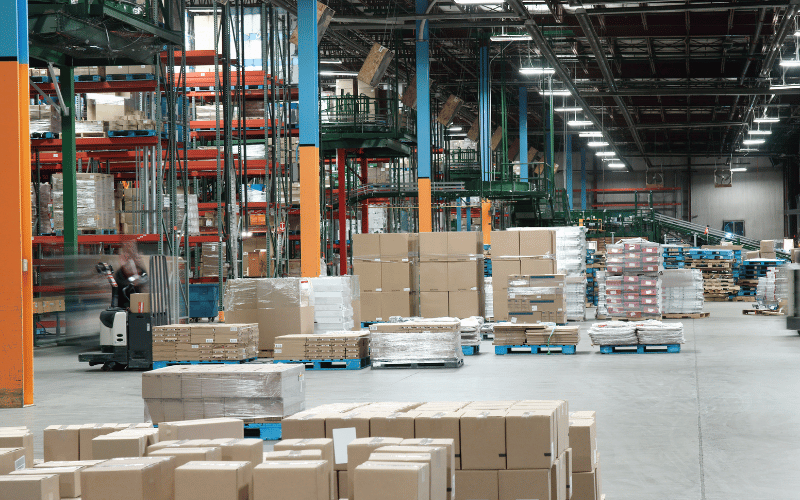
Cost control and efficiency define everything about running a distribution center. Operating a forklift—more especially, maintaining batteries—along with energy consumption and downtime constitute one of the largest continuous costs. For years, conventional lead-acid batteries have been the industry standard; yet, they have hidden expenses that compound over time.
Lithium forklift batteries are a better choice. These high-tech batteries help distribution centers save money on electricity bills, maintenance costs, and downtime. This article will talk about how lithium forklift batteries make things run more smoothly, save money, and work more efficiently.
The Hidden Costs of Traditional Forklift Batteries
A lot of distribution centers still use lead-acid batteries for forklifts, but they don’t know how much they cost to maintain and how much time they waste. Even though these batteries have been around for a long time, they have some problems.
1. Frequent Maintenance
To keep lead-acid batteries performing, they must be routinely watered. The lifetime of the battery is shortened in too low water levels. This adds to labor costs since employees must spend time verifying and replenishing batteries.
2. Downtime Due to Charging
A lead-acid battery takes about 8 hours to fully charge and another 8 hours to cool down before use. This means a forklift can be out of service for up to 16 hours. Many distribution centers need extra batteries and storage space just to keep operations running.
3. Shorter Lifespan
Before they have to be replaced, lead-acid batteries usually run 1,000 to 1,500 charge cycles. Given forklifts often run several shifts, battery changes become a regular cost.
4. Energy Waste
Lead-acid batteries are not energy efficient. A lot of electricity is wasted as heat during the charging process, leading to higher energy bills.
5. Workplace Safety Risks
Lead-acid battery handling runs the danger of acid spills, fumes, and heavy lifting. This raises safety issues as well as the possibility of workplace injuries.
How Lithium Forklift Batteries Save Money
Switching to lithium forklift batteries helps distribution centers reduce these costs while improving operations. Here’s how:
1. Lower Maintenance Costs
Since lithium batteries require no watering, workers are free from performing time-consuming maintenance. Keeping forklifts running smoothly helps to lower the likelihood of battery-related problems as well.
2. Longer Lifespan
Lithium batteries last much longer than lead-acid batteries—typically 3,000 to 5,000 charge cycles. This means fewer replacements, reducing long-term expenses.
3. Faster Charging
Fast charging time of lithium batteries is among their main benefits. Comparatively to lead-acid batteries, a lithium forklift battery can be completely charged in one to two hours instead of eight. Forklifts thus spend more time working than they do waiting for a battery to charge.
4. Opportunity Charging
Lithium batteries can be opportunity charged unlike lead-acid batteries, which call for complete charge cycles. They can thus be plugged in during breaks or shift changes without degrading the battery life. This extends the running lifetime of forklifts.
5. Energy Efficiency
Because they use energy more effectively, lithium batteries help to lower the cost of electricity. Additionally less heat is produced during charging, so lowering energy waste. This can significantly affect running costs over time.
6. No Need for Extra Batteries or Storage Rooms
Long charging and cooling times of lead-acid batteries sometimes mean that distribution centers need several batteries per forklift. Eliminating this need, lithium batteries save money and space.
Additional Benefits of Industrial Lithium Ion Batteries
Apart from cost savings, lithium forklift batteries come with several other advantages that make them a great investment.
1. No Dedicated Charging Room Required
Lead-acid batteries need a special charging room with proper ventilation due to the fumes they emit. Lithium batteries do not produce harmful gases, eliminating the need for a separate charging area.
2. Lightweight and Compact
Lithium batteries are lighter and more compact than lead-acid batteries, making forklifts easier to operate and reducing overall wear and tear.
3. Consistent Performance
Unlike lead-acid batteries, which lose power as they discharge, lithium batteries provide steady performance throughout the charge cycle. This ensures forklifts operate at full efficiency until the battery is empty.
4. Safer Work Environment
Lithium batteries do not leak acid or release harmful fumes, making them safer for workers. They also have built-in safety features that prevent overheating and overcharging.
Real-World Cost Savings
Many distribution centers that have switched to lithium forklift batteries have reported significant savings in maintenance, labor, and energy costs.
For example, a warehouse running multiple shifts with 20 forklifts can see the following savings by switching from lead-acid to lithium:
- Maintenance Costs: Savings of $500 to $1,000 per battery per year.
- Battery Replacement Costs: Lithium batteries last up to 3 times longer than lead-acid, reducing replacements.
- Energy Savings: 30% to 50% lower electricity bills due to better energy efficiency.
- Increased Productivity: More uptime due to faster charging and no need for battery swaps.
A case study from a large distribution center showed that switching to lithium batteries reduced downtime by 40% and saved over $100,000 annually in maintenance and energy costs.
Conclusion
Reducing operational costs is a priority for every distribution center, and lithium forklift batteries provide an effective solution. By switching to lithium, businesses can lower maintenance costs, reduce downtime, and save on energy bills while improving efficiency and safety.
If you’re looking for a long-term cost-saving solution for your distribution center, upgrading to lithium forklift batteries is a smart investment. Consider reaching out to a supplier to explore your options and calculate potential savings for your business.
DISCLAIMER Please note that everything posted on this site is up to date at the time of posting. Things change and products may be discontinued at any time. Please contact us for the most up to date information.
